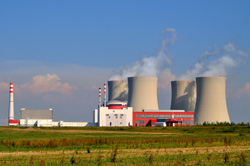Better understanding of interfacial waves to benefit industry
The behaviour of interfacial waves is critical to many different applications in industrial technology and society at large. Scientists in the UK have therefore studied large-amplitude instability waves and the evolution of large-scale structures in two-fluid shear flows with the aim of applying the results to a variety of industrial problems including oil and gas pipeline behaviour, wind-generated ocean waves and liquid jet atomisation. Within 'A non-linear stability framework for interfacial wave dynamics' (PSE2PHASE), project researchers have developed a nonlinear stability method for simulating two-phase shear flows. The approach combines the nonlinear parabolised stability equations (PSE) with a powerful interface tracking scheme, and is validated against high-fidelity direct calculations. Using this approach, they have produced 'an insightful and computationally efficient framework to provide better physical models of interfacial dynamics'. This knowledge will be important in the design of nuclear power plants, for example, as understanding the position of the air-liquid interface is critical to the operation of heat exchangers inside the nuclear reactor. Similarly, the creation of liquid droplets is an important design consideration for spray combustors of gas turbine engines. The broad applicability of this research work should lead to substantial benefits for a variety of European industries, including companies such as BP and British Nuclear Fuels, according to the researchers. They added that gas turbine manufacturers such as Rolls-Royce will also benefit from more efficient simulations of liquid jets.



